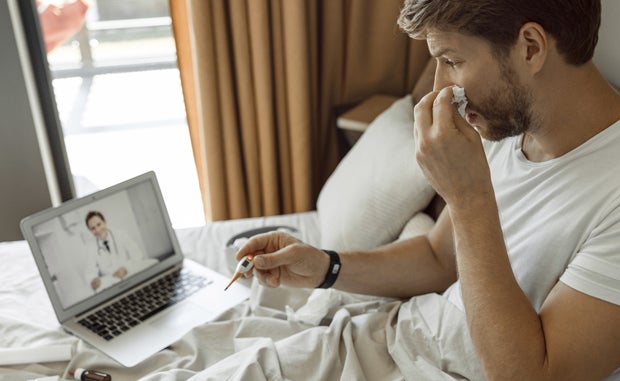

Consumer Attitudes Changing on Accessing Care Remotely

The pandemic’s impact on how consumers access health care is being measured on a daily basis, and early data show dramatic increases in virtual care visits. Now, researchers and provider organizations are assessing how consumers’ experiences during the pandemic may affect how they access care in the future.
A recent Commonwealth Fund report notes that telehealth visits are starting to plateau and in some cases decline as physicians’ offices reschedule backlogged patients for more in-person appointments. Researchers at Harvard and Phreesia, a health care technology company, analyzed data on changes in visit volume for more than 50,000 providers that are Phreesia clients between mid-February and mid-May covering more than 12 million visits.
Data from mid-February until early April showed visits to ambulatory practices dropped nearly 60%. Since then, a rebound has occurred across all specialties, but the number of visits is still roughly one-third below what was seen before the first case was identified in the U.S.
Researchers at NYU Grossman School of Medicine took a more concentrated look at the explosion in telehealth visits. They found that between March 2 and April 14 there were nearly 145,000 virtual care visits at NYU Langone Health, an increase of more than sixfold over prepandemic levels. Nonurgent virtual care visits soared by 4,345%. Of all virtual visits, 56% of urgent care and 17.6% of nonurgent visits were COVID-19-related.

On March 19, NYU Langone Health expanded video visits to all of its ambulatory care settings — reaching 7,000 visits within 10 days, accounting for 70% of all ambulatory care volume during this time.
Satisfaction ratings with NYU virtual care visits remained positive throughout the rapid expansion, the study’s authors say. They anticipate that many who received a crash course in telemedicine will continue to use it long term, but they say much will depend on whether regulators’ relaxed licensing requirements and insurers’ decisions to expand telehealth reimbursement will continue.
Regardless of what transpires on the policy front, Prem Shah, CVS Health’s head of specialty pharma strategy, expects more patients to seek broader virtual care services at home after the pandemic subsides. The pandemic allowed CVS to truly test its virtual capabilities, Shah noted in a recent interview. The company quickly realized how important telehealth and support services would be after seeing a 30% rise in encounter volume with some patients asking for help in managing their specialty medication, while others needed help finding supplies beyond the medication itself.
Shah believes more consumers — such as cancer patients who now receive infusions in a hospital setting — will seek in-home care for greater convenience and to mitigate risks of leaving home for treatment.
Two Telehealth Areas Endure
There are a couple of other changes in consumer behavior that may continue due to their positive telehealth experiences, according to a recent report.
- Teletriage: Many patients will now see telehealth as their first point of contact for urgent care. Ethan Booker, M.D., medical director of Maryland-based MedStar Health’s Telehealth Innovation Center and the MedStar eVisit platform, says the coronavirus has given providers the confidence to use telehealth and mobile health tools as a first point of contact, to assess patient needs and decide on a course of treatment.
- Remote patient monitoring: This has been a critical focus of telehealth during the pandemic as providers use these platforms to provide care for infected and potentially contagious patients at home. Telehealth provides the opportunity to move from a highly episodic care experience to a more relational experience for both patients and providers, Booker says. That will be a valuable lesson for expanding telehealth use going forward.
In Illinois, OSF HealthCare launched a remote patient-monitoring program in April. It sent a mobile health kit to hundreds of patients and had them check in with nurses at a new call center. Once the pandemic subsides, the health system will pivot the program to new populations and create a model for deployment during future emergencies.



